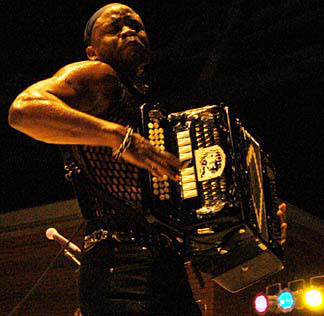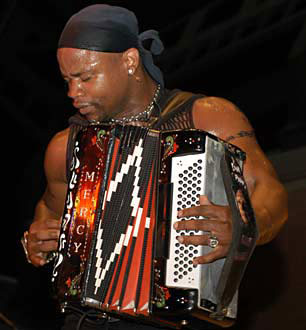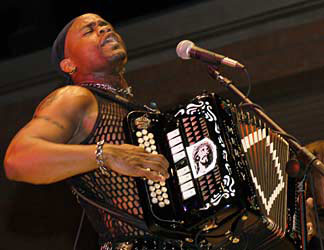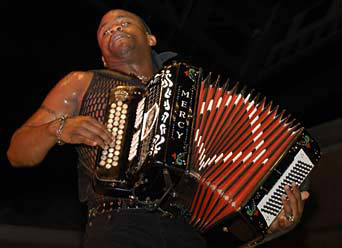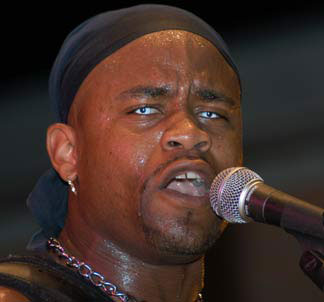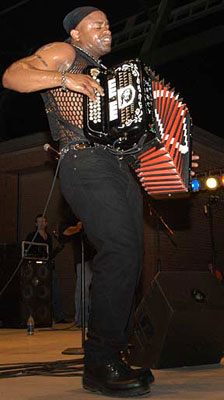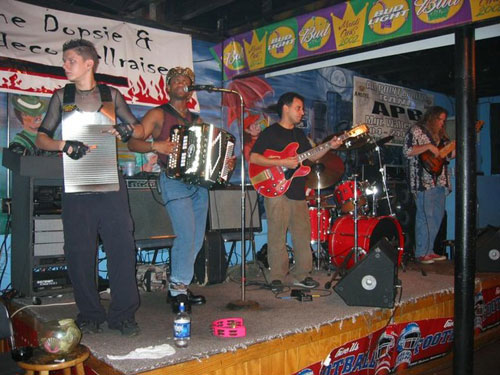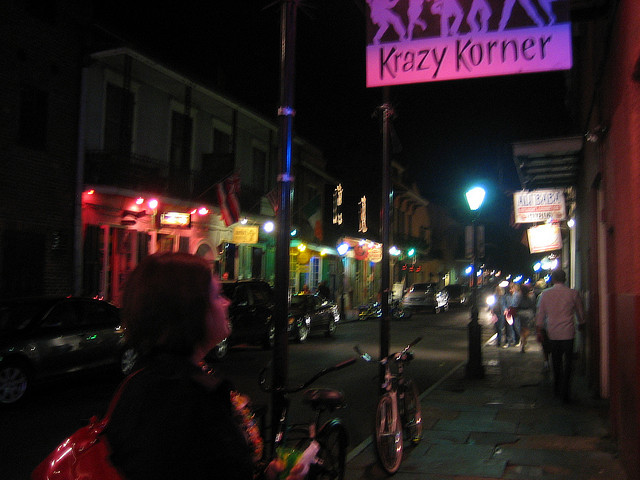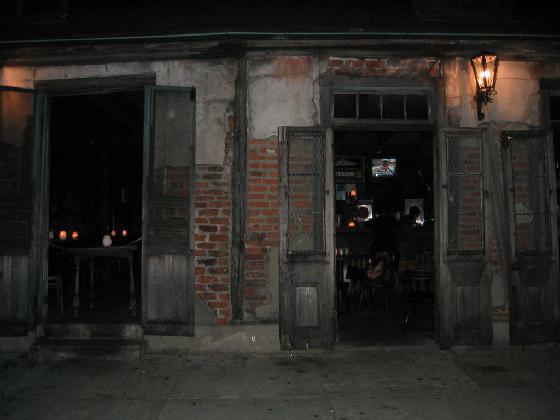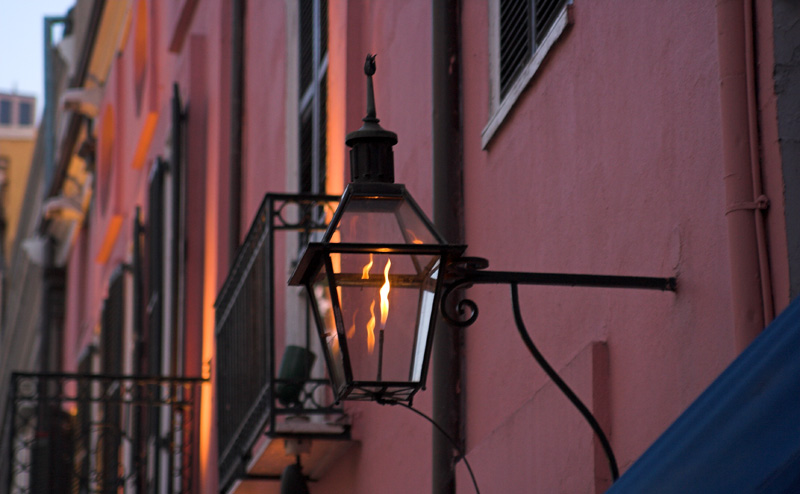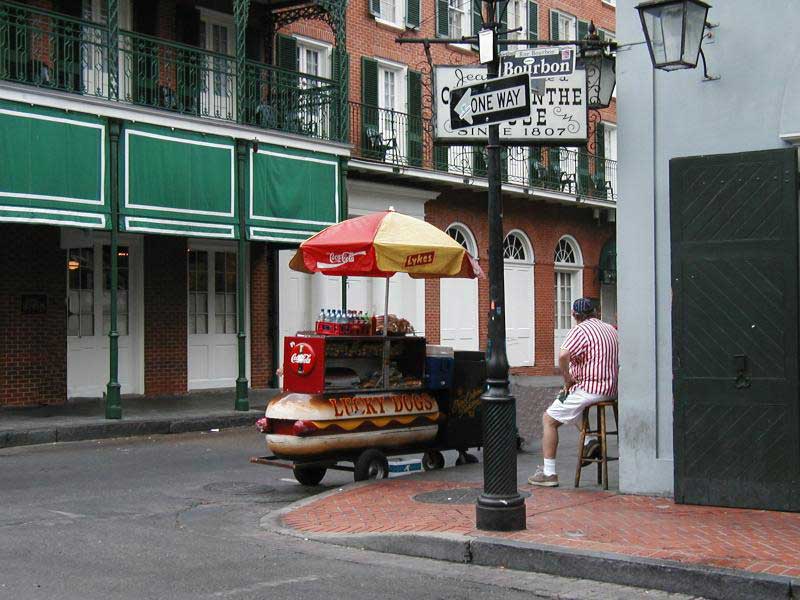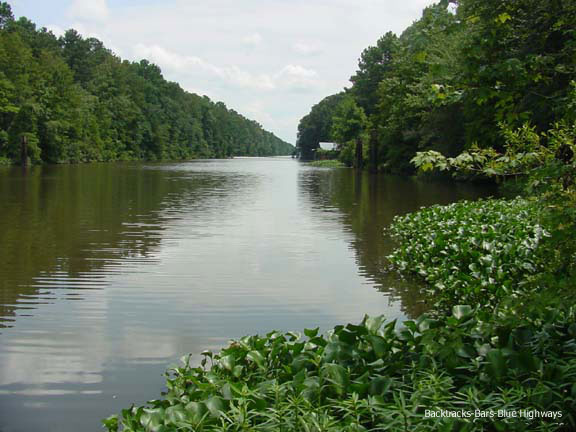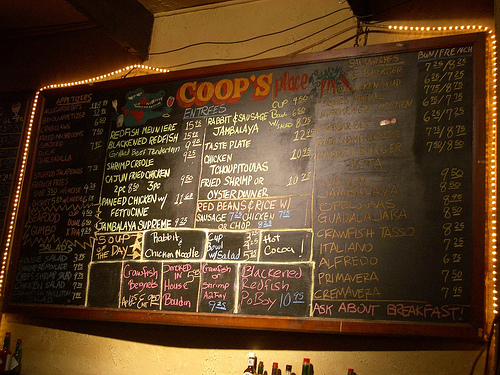
Where’d that come from? I knew after ordering the beer that the guy behind the bar was one piece short of a puzzle. Drugs, too many for too long… Just order a beer, don’t confuse him with a mixed drink, and don’t ask him what’s on tap. Just say “a beerâ€, and point to the spigot that he’s standing nearest to – everything should be just fine. Even the simplest thought or idea went in through one or both ears, but where it traveled once insiside his head was unknown. Check Point Charlie was not far from the Lamothe House where we were staying. Out to the street turning right would take us to Bourbon Street, or make a left turn towards Jackson Square, past Charlie’s, the Abbey, and Coop’s Place. Usually it was more of a circle… head down Bourbon Street and rest in the Blacksmith Shoppe, then follow the arc to Coop’s for food, and then on to the Abbey. Later in the evening the process is just reversed.
At any rate we’d done our laundry, sat at the bar and talked to the bartender for a couple hours one morning. We stopped in the next afternoon for a couple drinks and that’s when his world stopped for a brief moment. He was cleaning up bottles and glasses when he just froze in the middle of a sentence. He was staring at the floor, standing frozen with a dish towel in one hand and a glass in the other. I looked left a couple barstools down to another patron who was looking back at me, both of us wondering what the hell was wrong with our bartender. Although time has a way of appearing to move slower than it actually is – this time warp did allow for me to look left at my neighbor, raise my hands to indicate I had no idea what had struck the barman, and then actually lean over to look at the floor to see just what he was staring at… nothing unusual I could see. A glance back down to my neighbor and a shake of my head indicating I hadn’t discovered anything, the mystery freeze was still just that – a mystery. Then barman came back to life – just like that. He just started talking and going about his business as if nothing had occured. Again another glance down to my left and this time my neighbor was shaking his head. I think we just had to reassure ourselves that our world was intact – wherever barman had just gone for that moment in time was not a part of the world as we knew it. Yes, his body stayed behind, so did the dishtowel and glass, but his mind had timed out, his thoughts were elsewhere, and I’m sure he had no idea this had happened. I was about to axe him if he’d found Spock, but on second thought didn’t want him to short circuit.
A couple days passed without having setting foot in Check Point Charlie’s. It is a far better place to visit if you really do need to do laundry, or at night when a local blues band is playing. Genesha [Smiley] our batendress at the Blacksmith Shoppe and Genevieve matching shots with us at the Abbey were our hosts of choice. But this day, on the way to Coop’s for some lunch, we decided to rest our feet after having walked two blocks. We’d introduced ourselves once, three days and 300 drinks earlier, when we first shot-the-shit at the bar. I can say I haven’t a clue, NFI, what his name was, and after witnessing his brain call a timeout, I wasn’t positive he even knew. Most people realize after hearing Wayne’s Aussie accent, he’s not a local, and maybe you might remember alittle something more about a patron, maybe. But on this day…Barman greeted us by our first names as we took our first step in the door. “Hey, Wayne, Dave!†…Where’d that come from? Where’d he pull that piece of memory from? After what I’d seen a couple days earlier, it was like watching the lotto – spin the basket and see what ping pong ball of a thought will pop out. This spin drew our lucky numbers. Well, don’t try to analyze it, just order up… “Two beers, and stick around in our world for awhileâ€. “huh?, two beers?, stick around where?â€, “Damn it!, I’ve confused him!â€.
Check Point Charlie
[open 24 hours] is the place to do your laundry in the back, sit at the bar while the clothes spin round, play pool, get a bite to eat, and in the evening listen to local blues bands. It ranks second to the Abbey in patrons with body art and holes in both jeans and tongues, but patrons of one often frequent the other, so because of Genevieve, I rate the Abbey #1.
